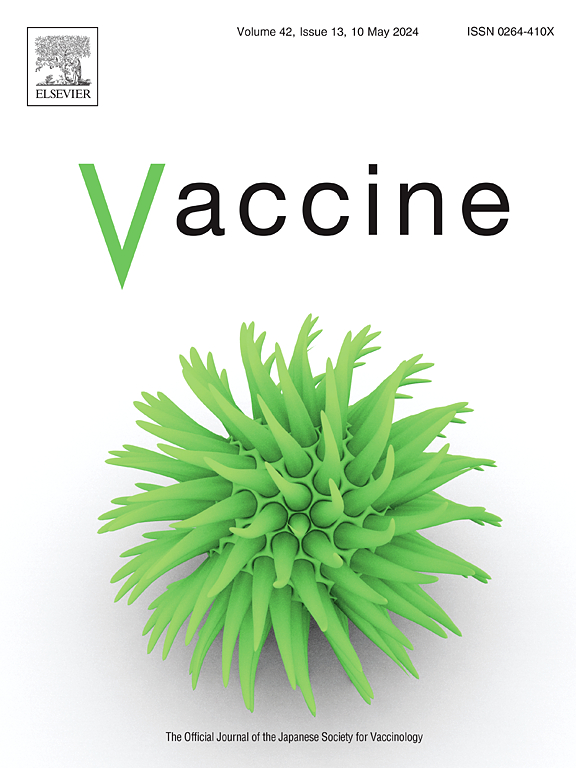SARS-CoV-2 vaccine failure rates and predictors of immune response in a diverse immunocompromised patient population
IF 4.5
3区 医学
Q2 IMMUNOLOGY
引用次数: 0
Abstract
Background
Determining individual responses to vaccination is critical for effective prevention of SARS-CoV-2 infection, particularly in populations at risk of vaccine failure.
Methods
In this prospective study, we collected serum specimens prior to the first and post-second and -third vaccinations to examine the quantity, quality, and durability of immune responses to SARS-CoV-2 vaccination in patients receiving various immune-modulating therapies. To determine rates of vaccine failure, we measured SARS-CoV-2 anti-spike protein immunoglobulin G and neutralisation titres.
Findings
We analysed post-vaccination serum samples from 293 potentially immunocompromised patients (10·2 % haematologic malignancies, 56·0 % solid tumours, 27·6 % neuroimmunological conditions, and 6·1 % other). Based on IgG titres, 22·4 % and 12·0 % of cases were deemed vaccine failures by serology within 6 months of the second and third COVID-19 vaccinations, respectively; these rates were 32·7 % and 13·9 %, respectively, based on neutralisation. Notably, 12·2 % of samples did not have functional neutralising antibodies despite positive serology (mismatched result) within 6 months of the second COVID-19 vaccine dose. The highest rate of vaccine failure occurred in patients receiving active B-cell depleting therapies (primarily haematological malignancies or neuroimmunological conditions); those receiving cytotoxic chemotherapy or immune checkpoint inhibitors (predominantly patients with solid tumours) were at the lowest risk for vaccine failure.
Interpretation
Among patients receiving potentially immunosuppressive therapies, individuals treated with B-cell depletion therapies have high risk for vaccine failure after COVID-19 vaccination, but the rate of failure declines significantly with subsequent doses. In these populations, positive serology tests alone may not signify a protective immune response.
Funding
Supported by a grant from Regeneron Pharmaceuticals, Inc., and P54 CA260560.
不同免疫功能低下患者群体中SARS-CoV-2疫苗失败率和免疫反应预测因子
背景:确定个体对疫苗接种的反应对于有效预防SARS-CoV-2感染至关重要,特别是在有疫苗接种失败风险的人群中。方法在这项前瞻性研究中,我们收集了接受各种免疫调节疗法的患者在第一次疫苗接种前和第二次和第三次疫苗接种后的血清标本,以检验接种SARS-CoV-2疫苗的免疫反应的数量、质量和持久性。为了确定疫苗失败率,我们测量了SARS-CoV-2抗刺突蛋白免疫球蛋白G和中和滴度。研究结果:我们分析了293例潜在免疫功能低下患者的疫苗接种后血清样本(10.2%为血液学恶性肿瘤,56.0%为实体瘤,27.6%为神经免疫疾病,6.1%为其他)。根据IgG滴度,在第二次和第三次接种后6个月内,血清学诊断为疫苗失败的病例分别为22.4%和12.0%;这些比率分别为32.7%和13.9%。值得注意的是,12.2%的样本在第二次接种COVID-19疫苗后的6个月内,尽管血清学呈阳性(结果不匹配),但没有功能性中和抗体。疫苗失败率最高的是接受活性b细胞消耗疗法的患者(主要是血液病恶性肿瘤或神经免疫疾病);接受细胞毒性化疗或免疫检查点抑制剂的患者(主要是实体瘤患者)疫苗失败的风险最低。在接受潜在免疫抑制疗法的患者中,接受b细胞消耗疗法的个体在COVID-19疫苗接种后疫苗失败的风险很高,但失败率随着后续剂量的增加而显著下降。在这些人群中,单独的血清学检测阳性可能并不意味着保护性免疫反应。由Regeneron Pharmaceuticals, Inc.和P54 CA260560拨款支持。
本文章由计算机程序翻译,如有差异,请以英文原文为准。
求助全文
约1分钟内获得全文
求助全文
来源期刊

Vaccine
医学-免疫学
CiteScore
8.70
自引率
5.50%
发文量
992
审稿时长
131 days
期刊介绍:
Vaccine is unique in publishing the highest quality science across all disciplines relevant to the field of vaccinology - all original article submissions across basic and clinical research, vaccine manufacturing, history, public policy, behavioral science and ethics, social sciences, safety, and many other related areas are welcomed. The submission categories as given in the Guide for Authors indicate where we receive the most papers. Papers outside these major areas are also welcome and authors are encouraged to contact us with specific questions.
 求助内容:
求助内容: 应助结果提醒方式:
应助结果提醒方式:


